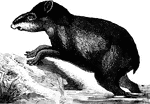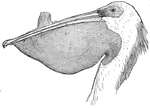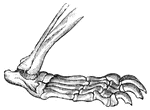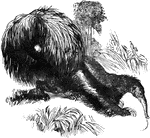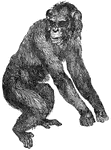
Chimpanzee
The chimpanzee appears more like humans than any other animal and is found in the west part of Africa.…

Vampire Bat
The vampire bat of South America measures two or three feet from wingtip to wingtip. It lives by sucking…
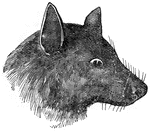
Kalong Bat
The kalong bat can have a wingspan up to five feet. Its head is like that of the fox, and it lives primarily…

Tiger
The tiger found only in Asia, stands three feet high at the shoulders, but can be as long as eight feet.…
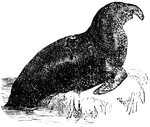
Elephant seal
The elephant seal is the largest fin-footed mammal. It can reach 18 feet in length and weigh 5000 pounds.…
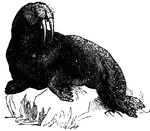
Walrus
This sea mammal is known for the great length of the canine teeth of the upper jaw, sometimes reaching…
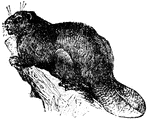
Beaver
The beaver is distinguished from all other rodents by its flat and scaly tail. Its hind feet are webbed,…

Capybara
The capybara is the largest member of the rodent family. Its shape is like that of the pig. Its feet…
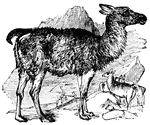
Llama
The llamas of S. America resemble the camel in form and structure. They have, however, no hump, and…
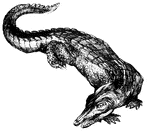
Crocodile
Crocodiles are more thoroughly aquatic than alligators, and therefore, their hind feet are more largely…
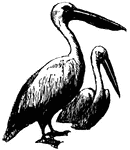
Pelican
Pelican, a water bird with webbed feet and a long bill having a pouch on the under surface. The upper…

Salamander
In the land salamander, the body is black and warty with long irregular yellow spots distributed over…

Chameleon
This type of lizard lives on trees, clinging to the branches by their feet and prehensile tails. They…
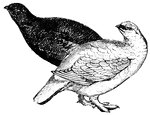
Ptarmigan
The Ptarmigans have feet much like those of a hare. Their legs and toes and soles of the feet are covered…
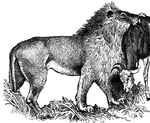
Lion
A lion when fully grown is nearly eleven feet long from nose to tip of tail and about four feet in height,…

Tiger
The tiger found only in Asia, stands three feet high at the shoulders, but can be as long as eight feet.…
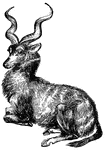
Kudu
A native of S. Africa and similar in appearance to the antelope. The male's horns are nearly five feet…

Mud Puppy
The mud puppy has two pairs of legs. It also has persistent external gills. It can attain a length of…

Grebe
Diving birds, such as the grebe, have webbed (or lobed) feet and are expert in swimming and diving.

Loon
The loon is a diving bird. Its peculiar cry, sometimes resembling a hysterical laugh, has given rise…
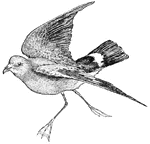
Petrel
Petrels resemble gulls, except in having the nostrils open as two parallel tubes on the top of the beak.
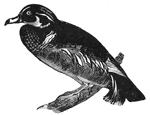
Wood Duck
These birds have webbed-feet, with heavy, oily plumage. the body is flattened, and all are fine swimmers.

Mole
Moles are well fitted for digging by the very large front feet and strong muscles of the front legs.…

Sea Urchin
Sea urchin: the heavy projections are the spines; the long, slender ones are the tube feet.

Amphipoda
An order of sessile-eyed malacostracan crustaceans, with feet directed partly forwards and partly backwards.…
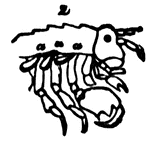
Amphipoda
An order of sessile-eyed malacostracan crustaceans, with feet directed partly forwards and partly backwards.…
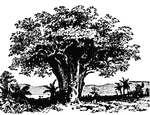
Baobab
The baobab tree or monkey-tree belongs to the order Bombaceae. It is one f the largest of trees, its…
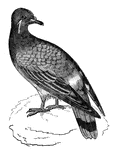
Pigeon
Pigeons are distinguished by their slender feet which are adapted for perching, whilst the voice is…
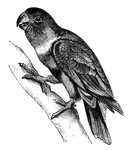
Lory
The Lory is a climbing bird distinguished by the fact that the feet have four toes each, of which two…

Bicycle
Bicycles are two-wheeled machines for riding by pressing the feet on pedals. The first bicycle is a…
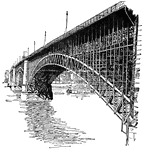
Eads Bridge
A steel arch bridge erected in 1874 and costed around one million dollars. Crosses over the Mississippi…

Siemens and Halske's Electric Engine
The first electric railway built in Berlin in 1879. The line was 2 feet wide and 2,700 feet long.

Fort Pulaski
Fort Pulaski, on Cockspur Island at the entrance to the Savannah River, Georgia, was built by the United…
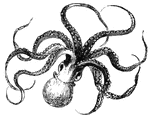
Octopus
Part of the cephalopod group. The name cephalopod is derived from two greek words which mean feet on…

Pisa Cathedral
The most remarkable campanile in the world is known everywhere as the "Leaning Tower of Pisa." Its construction…
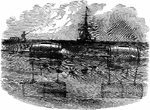
Infernal machine
"Infernal machine designed by the Confederates to destroy the Federal Flotilla in the Potomac discovered…

Battle at Potomac
"Engagement between the Federal troops and the Confederates on the Virginia side of the Potomac, opposite…

Mourning Gibbon
The Gibbon stands about four feet high and are distinguished by their long arm. An ape because of the…
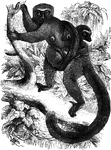
White-Fronted Lemurs
"Genus Maki: Lemur. The makis are the proper lemurs, and are distinguished by thick, soft fur,…
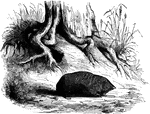
Chrysochloris Aurea
"These curious animals about three inches long, are exclusively African. They have a chunky body, small…
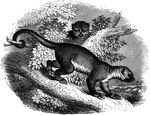
Kinkajou
"Of this genus there is a single species. A graceful animal, somewhat smaller than a cat, found in Guiana,…

Raccoon
"The raccoon is about twenty-six inches long; the tail eight inches; the weight twenty to twenty-five…

Crab-Eating Raccoon
"The raccoon is about twenty-six inches long; the tail eight inches; the weight twenty to twenty-five…
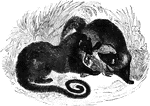
Pougonie
"P. typus, is of a yellowish brown, marked with three ranges of obscure spots on the back.;…
